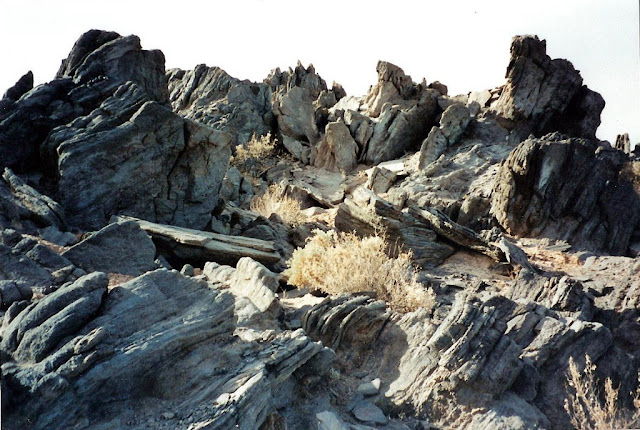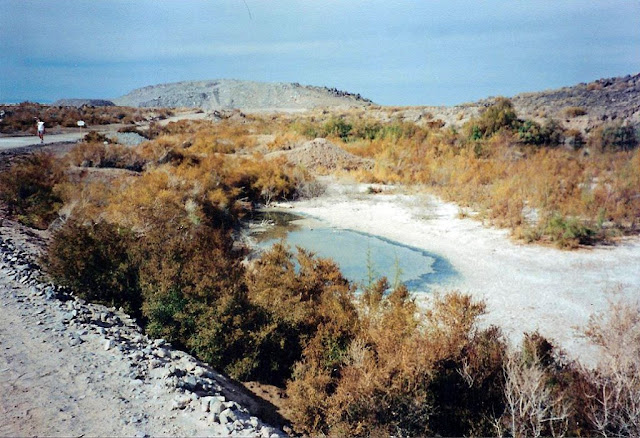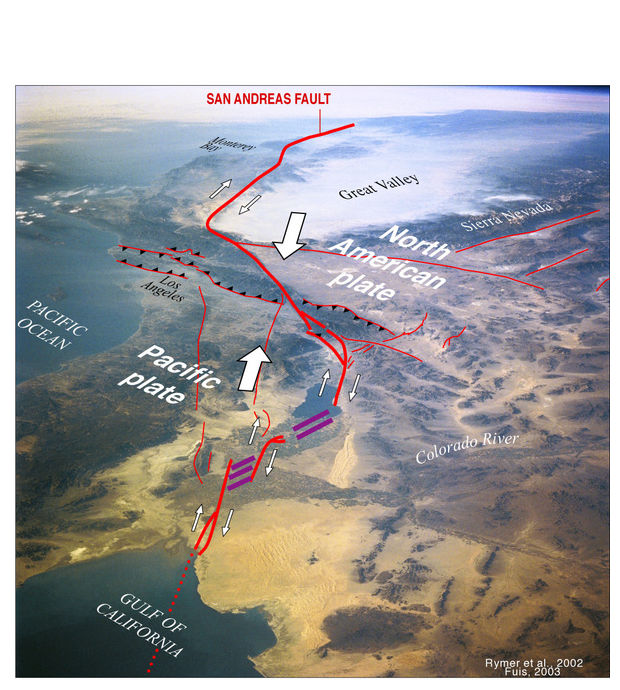I like to think it was because I stepped foot on the sandy soil and through a late morning fog, I gazed upon the volcanoes and felt myself transported back in time to some primordial landscape. The only sound was a gentle lapping of the sea against the gravel shore. No birds sang. No insects buzzed. The mountains on both sides were far away and to the south I sensed a vastness that would stretch all the way into Mexico. For the first time in my life, I felt at home.
Although I was well versed with the invertebrates of the Coon Creek Formation in West Tennessee, as a California transplant, unused to seeing volcanoes, I was overwhelmed with awe. This was a different kind of geology than I was used to seeing and I was hooked. I was determined to learn all I could about these volcanoes at Cal State Fullerton, and of course, all the reading I could manage on my own.
As we approached the southern end of the Salton, I noticed that the look and feel of the area was vastly different than the northern end. The latter was strewn in places with the bones of a dead community--the traces of a settlement that was never fully realized. But the south end was almost untouched by man and incredulity was so thick that one could almost brush it from the face with one's hand. Yeah, I was such the novice that I had regained the identity of the child within myself. If I could've drooled at that point, I would've.
But time was wasting and I wanted to investigate everything. Glenn walked the road up towards Rock Hill to see if my truck could make it and with his okay, we crossed over to my very first encounter with a volcano.
I climbed to the top quickly, all the while, taking in the landscape and scoping the lower regions for the mudpots I'd heard were there. Gulls began to crowd the shallows, looking for easy breakfast and then I saw Mullet Island. I realized that I had been privy to not one, but two volcanoes. Laugh if you will, but the experience was almost a revelation-an epiphany that brought every chart, diagram, and image in the pages of my books to life.


The map showed a knobby outcrop back at the end of the road called "Obsidian Dome," which as I recalled was the third of my volcano adventure. Once I was there, staring up from the bottom at the blackness above, I knew I had to climb it. The thick rhyolite lava had jelled fast and plugged the hole from where it came, and the shapes were contorted into the most twisted and convoluted imaginable. Pumice lay around at various points and I pocketed the largest specimen into my backpack immediately.
But the farther up I went, the more obsidian I encountered. Of course, I had to bring home a piece of this, too, but I had to wrap it carefully else it would cut me three ways to next Sunday.


Glenn stayed at the bottom to give my shots a better perspective of my climb.


What a view! In the distance, the steam rose from the thermal energy plants that dotted the region and that made use of magma a mere 2 miles below us. Just be know that the crust is so thin here, sends a thrill up one's spine, along with the fact that even on top of this hill of glass, we were still below sea level.

But of course, the sun rose higher all too fast, and it was time to wend our way back. What was left to see was Red Hill and although we crossed the road (seen below) that transverses the shallows of the Salton, we decided that paying $2.00 per person was not worthwhile considering that we needed to head towards home. Still, I edged towards the shoreline in order to pick up pieces of Halite that fascinated me with their sheeting planes.
Notice the domes on Red Hill that constitute two former vents, as well as the oxidation that has taken place, giving the island its name.
One day, I'll take a flight out to Palm Springs and revisit this area that impressed me in so many ways, but until then, I'll keep this image close so that I never forget the haunted first look this place ever took within my very psyche.
~~Lin aka roxxfoxx





































